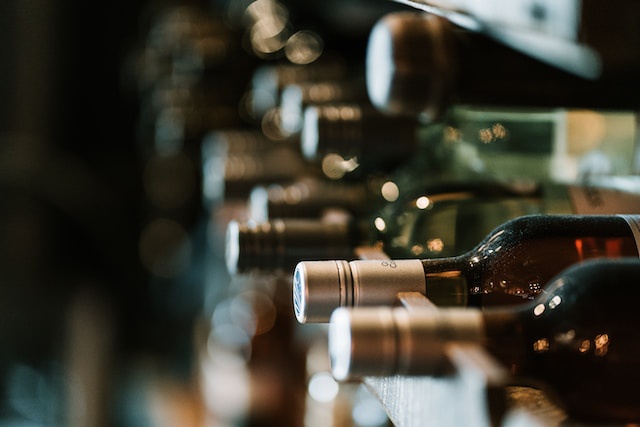The notion of "Old Vine" has transcended its mere marketing appeal, surpassing a mere label tactic aimed at boosting sales. As the wine industry continues evolving and wine consumers grow more discerning, the appreciation for old vines has reached new heights. This is due to the distinctive sensory qualities inherent in older vineyards, as well as the rich history and cultural significance associated with these revered vineyards.
Old vine wines are crafted from grapes grown on vines typically aged 50 years or more and occasionally even twice that age. But what makes the wines derived from these venerable vineyards so extraordinary? In this article, we will delve into the factors that contribute to the unique character and exceptional quality found in old-vine wines.
Wines originating from old vine plantations are cherished for their inherent complexity and depth of flavor. As grapevines age, their roots delve deeper into the earth, becoming more extensive and enabling them to access a wealth of nutrients and minerals within the soil. Older vines develop thicker trunks and sturdier arms, and it is not uncommon to witness vines over 75 or 100 years old trained in the form of free-standing "goblets" or "bushes," with arms that surpass their trunks in length or thickness. This phenomenon is quite remarkable since grapevines are fundamentally climbing or creeping plants. However, with age, their fruit can be cultivated almost akin to that of trees or bushes.
With advanced age, old vines possess the physiological advantage of increased sap flow compared to their younger, slender counterparts. This enables the plants to achieve an optimal balance of leaf canopy and fruit, facilitating optimal ripening and a higher likelihood of yielding top-quality wines. Moreover, the robust structure of older vines renders them less susceptible to diseases that commonly afflict younger vines, such as mold and Eutypa—a fungus that can truncate the lifespan of the plants by attacking their arms or spurs.
It is no coincidence that old vines thrive in regions naturally conducive to the long-term health of grapevines and optimal fruit production. These regions typically possess a Mediterranean climate characterized by cold, wet winters and hot, dry summers. This is significant because wine grapes, namely Vitis vinifera, originated in the Mediterranean Basin. Consequently, the vineyard sites and wine regions that harbor old vines tend to coincide with the finest wine-growing locations, where the world's most exceptional wines are crafted.
Appreciating an old vine wine is not just a means to savor a well-crafted alcoholic beverage; it is an opportunity to connect with the past and celebrate an enduring art form. Much like listening to the music of history's greatest composers, immersing oneself in literature, or gazing at the art of past masters, a glass of wine can contain more than meets the eye. When that wine is made from old vines, it allows us to grasp the distinct character of a particular historical place and appreciate the heroism of the farmers who possessed the foresight to preserve these aged vines in the ground rather than uprooting them for commercial convenience.
One notable figure who has gained recognition due to his appreciation of old vines is Randy Caparoso, a California-based wine journalist and photographer. Mr. Caparoso made the deliberate choice to reside in Lodi, California, precisely because it boasts the highest concentration of old vine plantings in the entire state and, consequently, the entire country. His enthralling stories and vivid photography can be found within the pages of his book, "Lodi! The Definitive Guide and History of America's Largest Winegrowing Region."
Before venturing into the realm of wine, Mr. Caparoso was an award-winning restaurateur. He initially embarked on a career dedicated entirely to wine as a sommelier in Honolulu from 1978 to 1988. Subsequently, from 1988 to 2001, he served as the founding partner, vice president, and corporate wine director of Roy's family of restaurants, which garnered numerous accolades, including recognition from the esteemed James Beard Foundation. During this time, Caparoso traversed the country, opening twenty-eight Roy's restaurants spanning from Hawaii to New York.
While working for Roy's, Caparoso earned the title of Restaurant Wine's Wine Marketer of the Year in both 1992 and 1999, and he was honored as Santé's inaugural Restaurant Wine & Spirits Professional of the Year in 1998. His journey serves as a classic example of how a wine professional's career can be guided by an unyielding passion for the liquid fruit of the vine, culminating in a life immersed among the vines.
In present times, when wine professionals in the fields of journalism, wine-related social media, or restaurant sommeliers seek to expand their knowledge of old vines, they frequently turn to Randy Caparoso. Even better, they embark on a pilgrimage to Lodi, where Caparoso takes great pleasure in personally guiding them through walks amidst grapevines as old as 50 or even over 100 years while sharing tastings of wines sourced from these same hallowed vineyards. There is truly no better way to experience the passion of old-vine winegrowing and cultivate a genuine appreciation for old-vine wines than by directly engaging with the source. Randy Caparoso stands as a widely acclaimed authority on the subject, ready to enlighten those who seek a deeper understanding of this venerable winemaking tradition.


No comments yet